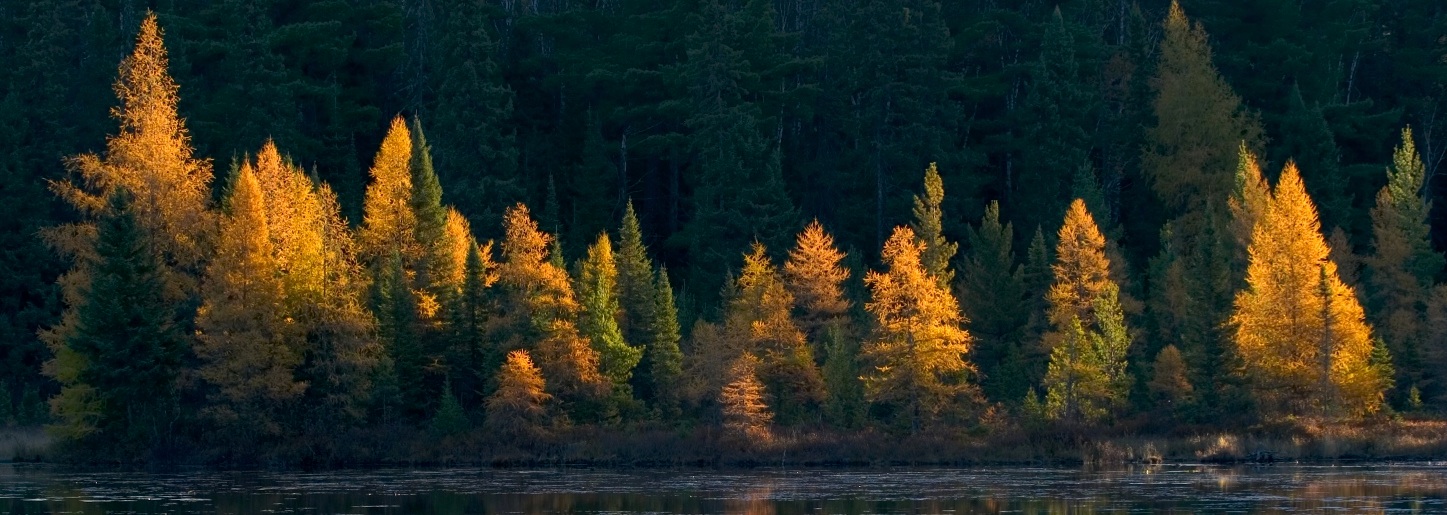
Low shoreline on lake. Mix of tamarack and spruce.
Tamarack
Larix larcina, bog larch, hackamatack
Sometimes you run into a patch of land and say, "NOW what?" It's wet, it's so deep in moss it's like wading through knee deep pillows.
One answer: Tamarack.
It's a bit more versatile than this: Any soggy place, short of standing water is suitable for tamarack. However it doesn't grow swiftly in these hostile conditions: After a 60 year old tree can be only 6 feet tall. While it's used to an environment where it gets almost no nutrients, give it just the tiniest bit of TLC and it will take off. It tolerates the high acid, low nutrient bog, but does much better on rich loamy soils, where it will grow 1.5 feet a year. In our nursery it does 2 to 2.5 feet a year.
Tamarack is a native tree ranging across aspen parkland and boreal forest and throughout the eastern hardwood forest as far south as the southern end of the Great Lakes. Heights can reach up to nearly 100 feet, but 60 is more common. This is one of our few zone 1 trees.
Commercially tamarack is an alternate for cedar for it's rot resistance. May be a market for organic fence posts. Heartwood can make good hardwood flooring. It's also a good subject for bonsai.
It's not a popular tree. I bring a box in now and then for native planting. Most people will prefer Siberian Larch for landscaping as a thicker faster growing tree.
More info about tamarack
The Gymnosperm Database Larix larcina
USFS Silvics Manual Larix larcina
Got something to say? Email me: sfinfo@sherwoods-forests.com
Interesting? Share this page.
Want to talk right now? Call me: (8 am to 8 pm only, please) 1-780-848-2548
Do not arrive unannounced. Phone for an appointment. Why? See Contact & Hours That same page gives our hours of operation.
Back to Top
Copyright © 2008 - 2021 S. G. Botsford
Sherwood's Forests is located about 75 km southwest of Edmonton, Alberta. Please refer to the map on our Contact page for directions.
